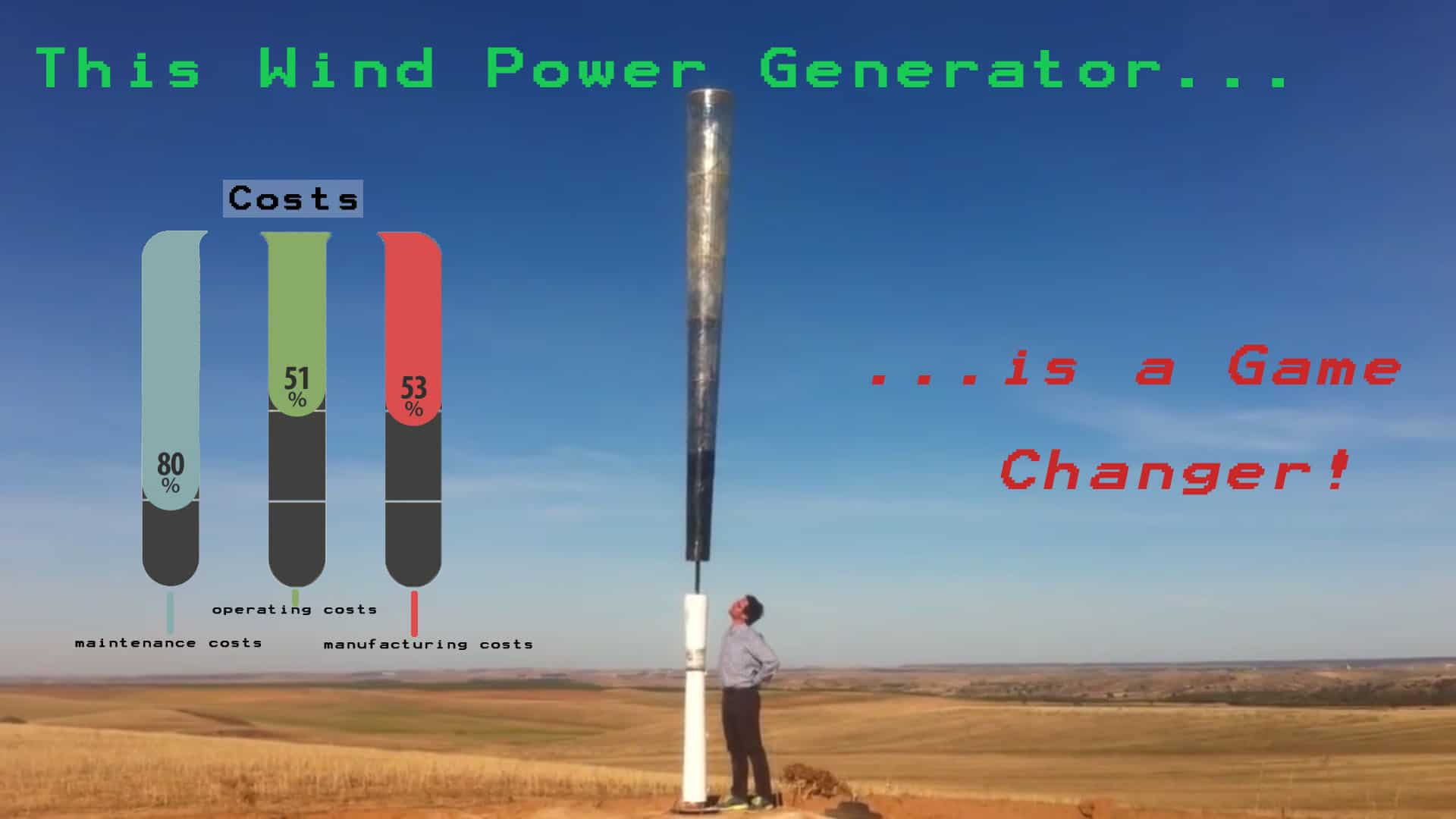The majority of us rely heavily on fossil fuels to power our world but there are many people that are trying to do their part to make changes and go green whether it’s reducing use of fossil fuels, using green energy, or even water conservation . My in-laws in Australia for example installed solar panels almost two years ago. Other people like to use “gray water” from their showers and baths and use it to flush their toilets with systems such as the reAqua. I even did my DIY Envirotoilet which saved a lot of water from being wasted.
And thankfully, there are now big companies that are also making changes and using renewable sources of energy. Driving into Las Vegas, I was pleasantly surprised to see solar power plants and in Washington state with their fields of wind turbines. In the next few decades, these types of setups will be a very common sight (hopefully). While people catch on, there are others who are already moving forward. Take the Vortex Bladeless for example.
The Vortex Bladeless Intro

The Vortex Bladeless is a wind turbine but without the blades which is being developed by a group of Spanish inventors. Rather than capturing energy with the rotational motion of turbines, the Vortex takes advantage of vorticity. This is an aerodynamic effect that occurs when wind breaks against a solid structure. The Vortex structure will then start to oscillate and capture the energy that is produced.
The Vortex was deliberately designed in such fashion to have no parts in contact at all such as gears, linkages, etc making the Vortex inexpensive and easy to maintain. The amount of raw materials needed is reduced for manufacturing cutting production costs and time. And the less moving parts, the less likely something will break which will extend time between maintenance checkups. The Vortex is also silent as it oscillates at a frequency (below 20 Hz)that does not produce audible noise. And last but not least, because it has no blades, it is safer for birds. Up to 328,000 birds die each year from collisions with wind turbine blades.

The Vortex Bladeless will cut manufacturing costs by 50 percent, operating costs by 51 percent, and maintenance by 80 percent. With all these great specs, there must be a downside, right? The Vortex Bladelss does produce 30 percent less energy than conventional wind turbines but because they are more slim, you have an opportunity to install many more considering the lower costs associated with this system.
The first goal is to produce small-scale and residential use Vortex systems. The 100W and 4 kW Vortex’s will work for private homes in developing nations. Their “long term” goal is to build a 1 MW Vortex by 2018. You can find out more information from the Vortex website or their Indiegogo page.

